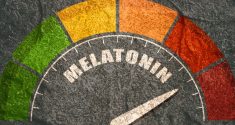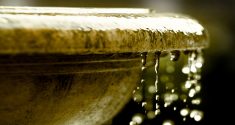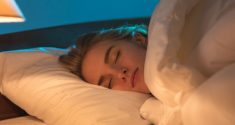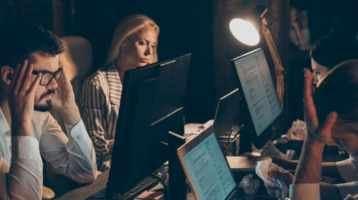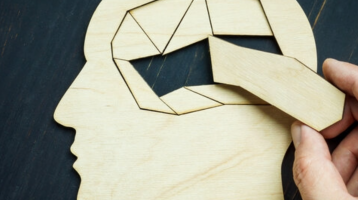The use of LED face masks as a beauty and anti-aging treatment has enjoyed a surge in popularity. Propelled by celebrity use and social media, this skin treatment does have a scientific foundation. In fact, supporting studies come from NASA and the US Navy. However, while LED light has been shown to reduce wound healing time and to be beneficial to skin appearance, depending on the time of use, LED face masks could disrupt sleep. That is because light is also a powerful cue for the circadian rhythm, impacting the sleep-wake cycle as well as the timing of melatonin production.
From Medical to Cosmetic Use
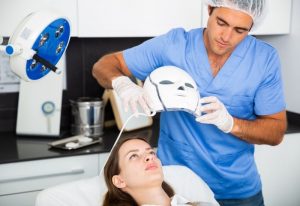 The medical use of LED light came into its own in the military when US Navy Seals began using the technology in the 1990s. They used it to promote faster wound healing and to aid in the regeneration of muscle tissue. The use of LED light for more cosmetic applications began in the early 2000s and has continued to evolve until the present, becoming far more accessible to the average person with home-use LED face masks.
The medical use of LED light came into its own in the military when US Navy Seals began using the technology in the 1990s. They used it to promote faster wound healing and to aid in the regeneration of muscle tissue. The use of LED light for more cosmetic applications began in the early 2000s and has continued to evolve until the present, becoming far more accessible to the average person with home-use LED face masks.
Many notable celebrities, along with social media influencers and users, have promoted the use of LED face masks, contributing to an uptick in popularity for this fairly non-invasive skin treatment option. Typically, blue light is used for the treatment of acne and similar types of skin problems and the near infra-red light is used for aging-related skin issues.
The use of such devices is generally recognized as safe, as long as a Food and Drug Administration (FDA)-approved device is used with appropriate eye protection. However, there are some potential side effects. Among these are eye strain, headaches, sleep problems and even insomnia. Some researchers attribute possible sleep issues to the links between light and circadian rhythm health, the sleep-wake cycle and melatonin production. In light of those connections, the fact that some LED face mask users experiencing sleep disturbances is not at all surprising.
How LED Face Masks Could Disrupt Sleep
The circadian rhythm, an approximately 24-hour cycle of light and dark, is one of the most basic cycles common to all life on Earth. All life, including humans, has evolved to this rhythm. The circadian rhythm influences countless bodily functions and processes, including the sleep-wake cycle and melatonin production. Light is the most powerful environmental cue for the circadian rhythm. The artificial lighting of the modern world has already been shown to have a negative impact on health via its impact on the circadian rhythm and sleep quality. That is especially true of short-wavelength blue light.
Aside from the blue light we are exposed to via our cellular phones and similar devices, LED lighting is another major source of blue light exposure. Recent research reveals that short-wave blue light exposure can impact circadian rhythm health and melatonin production. Colloquially referred to as the sleep hormone, melatonin is produced in the absence of light, after the bright light of day wanes into the dim dark of night. According to a Monash University study, florescent and LED lighting can actually reduce melatonin levels by as much as 50 percent.
Melatonin helps us to feel sleepy, so when its production is disrupted, we can expect sleep to be disrupted as well. Disruptions in sleep can impact overall sleep-wake cycle timing and circadian rhythm health. Excessive evening light can also disrupt the light-sensitive circadian rhythm, adding to sleep difficulties. Over time, this can impact health negatively in a variety of ways, including increasing the risk of numerous diseases and chronic conditions such as cardiovascular diseases, certain types of cancers, metabolic disorders, obesity, diabetes, depression and other mood disorders.
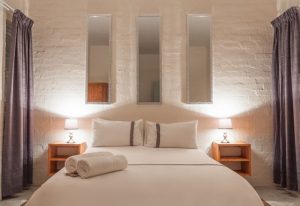
Monash University researcher and associate professor of psychology Sean Cain suggests that the light exposure from the LED masks may be even more intense than that of home lighting. With what is already known and well established about the relationship between light and sleep timing, sleep quality, circadian rhythm health and melatonin production, taking a cautious approach to LED face mask use is simply the smart move for your sleep and overall health.
Daytime Use is the Best Choice
If you choose to take advantage of the potential facial skin benefits of an LED face mask, do it during the bright light of day. Protect sleep timing, sleep quality and circadian rhythm health by avoiding use of LED face masks in the late afternoon or evening.
While studies have not yet been done specifically on the potential for LED face masks to disrupt sleep, the evidence is already established and very clear that bright evening light and blue light in the evening can disrupt sleep, melatonin levels and circadian rhythm health.
